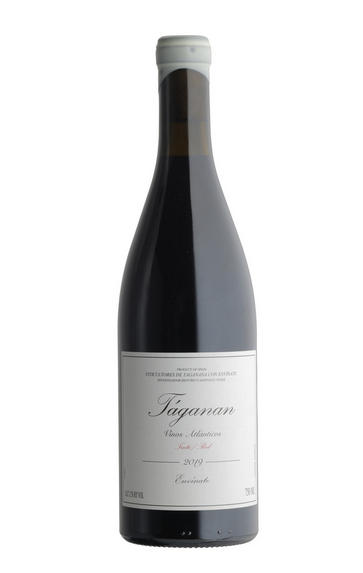
2019 Táganan, Tinto, Envínate, Tenerife, Spain
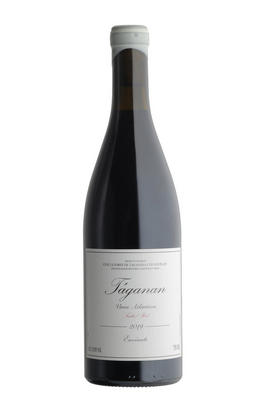
Critics reviews
The 2019 Táganan Tinto, the village red from Taganana, was produced with grapes from different vineyards and altitudes that range between 75 and 400 meters, from vines that are 50 to 150 years of age planted on old basalt soils. Both 2019 and 2020 were very dry and low yielding, a constant here since 2016; they had to change the pruning of the old vines to try to adapt to these dry conditions, yet they still saw a 60% reduction in their yields.
This is a blend of mostly Listán Negro and Negramoll but also some Mulata, Listán Gacho (pink/rosé) and Malvasía Rosada. The wine is only 12% alcohol and has notable freshness. It fermented with 30% to 70% of stems, depending on the plot, and always with indigenous yeasts, and it matured with fine lees in well-seasoned, neutral 228-litre oak barrels for one year. It might be marginally riper than the 2020 and a little more rustic.
3,000 bottles (down from 5,000) were produced. It was bottled in December 2020.
Drink 2022 - 2026
Luis Gutiérrez, Wine Advocate (February 2022)
Sweet berries with lots of orange peel and dried flowers, such as honeysuckle. Medium body, fine tannins and a subtle, fruity finish. Fresh and delicious at the end.
Drink now
James Suckling, JamesSuckling.com (November 2021)
A smörgåsbord of local grape varieties grown on volcanic soils right by the Atlantic combined to create the very essence of the place – all salty minerals and acid, wisps of smoky spice, pomegranate and red berry, plus a nip of tannin. A delight.
Drink 2021 - 2030
David Williams, Decanter.com (August 2021)
About this WINE
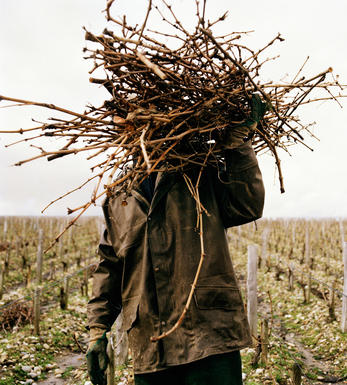
Envínate
Envínate, a name that translates to "wine yourself" in Spanish, perfectly encapsulates the philosophy of this producer. With a profound commitment to minimal intervention winemaking, the producer allows the grapes and terroir to express themselves naturally.
The winery was founded in 2005 by four friends: Roberto Santana, Alfonso Torrente, Laura Ramos, and José Ángel Martínez. They share a passion for crafting wines that showcase the unique characteristics of each vineyard they work with.
Envínate is known for seeking out old, low-yielding vineyards in various regions across Spain, such as the Canary Islands, Ribeira Sacra, Ribeiro, and Almansa. These vineyards often have vines that are several decades or even centuries old. They aim to produce authentic and expressive wines that capture the essence of the land and climate they are grown by focusing on indigenous grape varieties and traditional winemaking techniques.
Their winemaking approach emphasizes minimal intervention in both the vineyard and the cellar. They practice organic and biodynamic farming, working closely with local grape growers to ensure sustainable and respectful practices. In the cellar, they use wild yeast fermentation, low levels of sulfur, and avoid heavy filtration or clarification to preserve the wines’ natural characteristics.
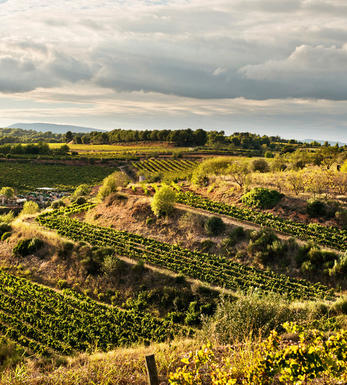
Spain
For so long, Spain was regarded as a source of inexpensive red wine with only Rioja standing above the parapet. Now there is a plethora of interesting wines in many different styles.
Exciting fresh whites, especially from the Albariño in the Rías Baixas and Verdejo in Rueda, – not forgetting Viura in Rioja - have extended the choice. There have also been interesting developments in that most classical of all wine regions, Jerez - the home of sherry - not so much in modernisation of production, but in developing small-scale bottlings of the highest quality Sherry at remarkably affordable prices.
Modern techniques and a new appreciation of what might be possible have encouraged pioneers to produce some startlingly attractive reds. There are now some thoroughly competent wines from La Mancha, and striking bottlings of Monastrell (known elsewhere as Mataró or Mourvèdre) in Jumilla.
Thankfully, the modernisation of the pedestrian has not held back successful traditional styles of wine. Alongside such modernists as Palacios Remondo and Allende in Rioja, long established houses like La Rioja Alta and CVNE continue to make graceful, old-style wines contingent upon several years’ barrel-ageing before further maturation in bottle. These Reserva and Gran Reserva wines have the gentle fragrance of well-seasoned fruit in partnership with a dash of vanilla oak. There are also subtle differences between regions of Rioja and in the precise makeup of the grape mix, with Garnacha and Mazuelo supporting the dominant Tempranillo.
The only challenger to Rioja's claim to red wine supremacy is the Ribera del Duero, where the same red grape, Tempranillo, defines the wines, though known here as Tinto Fino. Most magisterial of all producers is Vega Sicilia whose Unico wines are not released onto the market before a minimum of 10 years - including at least seven years of barrel ageing.
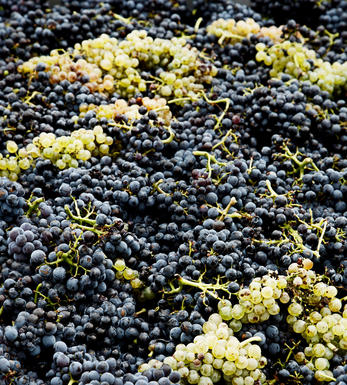
Other Varieties
There are over 200 different grape varieties used in modern wine making (from a total of over 1000). Most lesser known blends and varieties are traditional to specific parts of the world.


Buying options
Add to wishlist
Description
The 2019 Táganan Tinto, the village red from Taganana, was produced with grapes from different vineyards and altitudes that range between 75 and 400 meters, from vines that are 50 to 150 years of age planted on old basalt soils. Both 2019 and 2020 were very dry and low yielding, a constant here since 2016; they had to change the pruning of the old vines to try to adapt to these dry conditions, yet they still saw a 60% reduction in their yields.
This is a blend of mostly Listán Negro and Negramoll but also some Mulata, Listán Gacho (pink/rosé) and Malvasía Rosada. The wine is only 12% alcohol and has notable freshness. It fermented with 30% to 70% of stems, depending on the plot, and always with indigenous yeasts, and it matured with fine lees in well-seasoned, neutral 228-litre oak barrels for one year. It might be marginally riper than the 2020 and a little more rustic.
3,000 bottles (down from 5,000) were produced. It was bottled in December 2020.
Drink 2022 - 2026
Luis Gutiérrez, Wine Advocate (February 2022)
wine at a glance
Delivery and quality guarantee